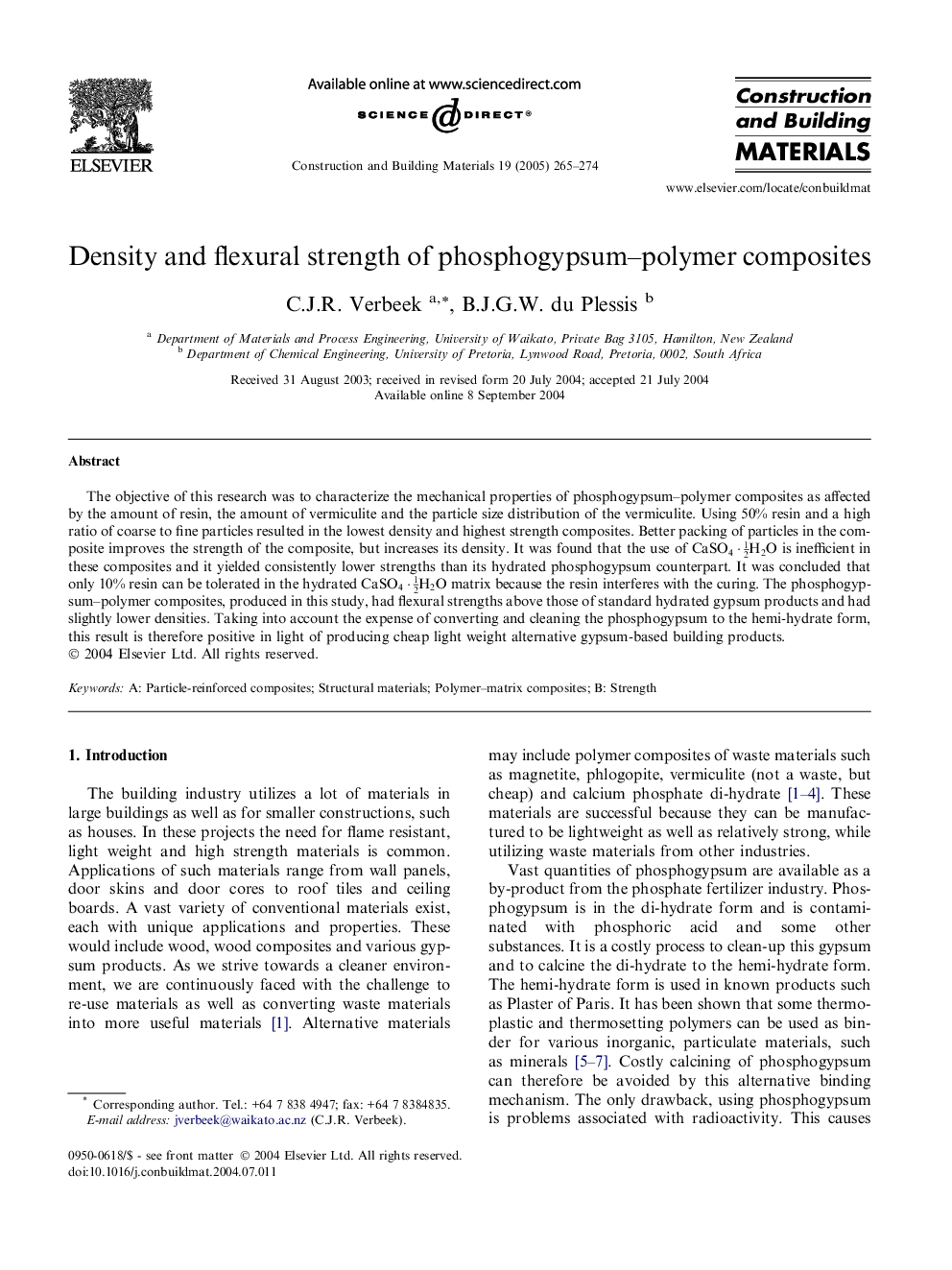| Article ID | Journal | Published Year | Pages | File Type |
|---|---|---|---|---|
| 10285499 | Construction and Building Materials | 2005 | 10 Pages |
Abstract
The objective of this research was to characterize the mechanical properties of phosphogypsum-polymer composites as affected by the amount of resin, the amount of vermiculite and the particle size distribution of the vermiculite. Using 50% resin and a high ratio of coarse to fine particles resulted in the lowest density and highest strength composites. Better packing of particles in the composite improves the strength of the composite, but increases its density. It was found that the use of CaSO4·12H2O is inefficient in these composites and it yielded consistently lower strengths than its hydrated phosphogypsum counterpart. It was concluded that only 10% resin can be tolerated in the hydrated CaSO4·12H2O matrix because the resin interferes with the curing. The phosphogypsum-polymer composites, produced in this study, had flexural strengths above those of standard hydrated gypsum products and had slightly lower densities. Taking into account the expense of converting and cleaning the phosphogypsum to the hemi-hydrate form, this result is therefore positive in light of producing cheap light weight alternative gypsum-based building products.
Related Topics
Physical Sciences and Engineering
Engineering
Civil and Structural Engineering
Authors
C.J.R. Verbeek, B.J.G.W. du Plessis,
